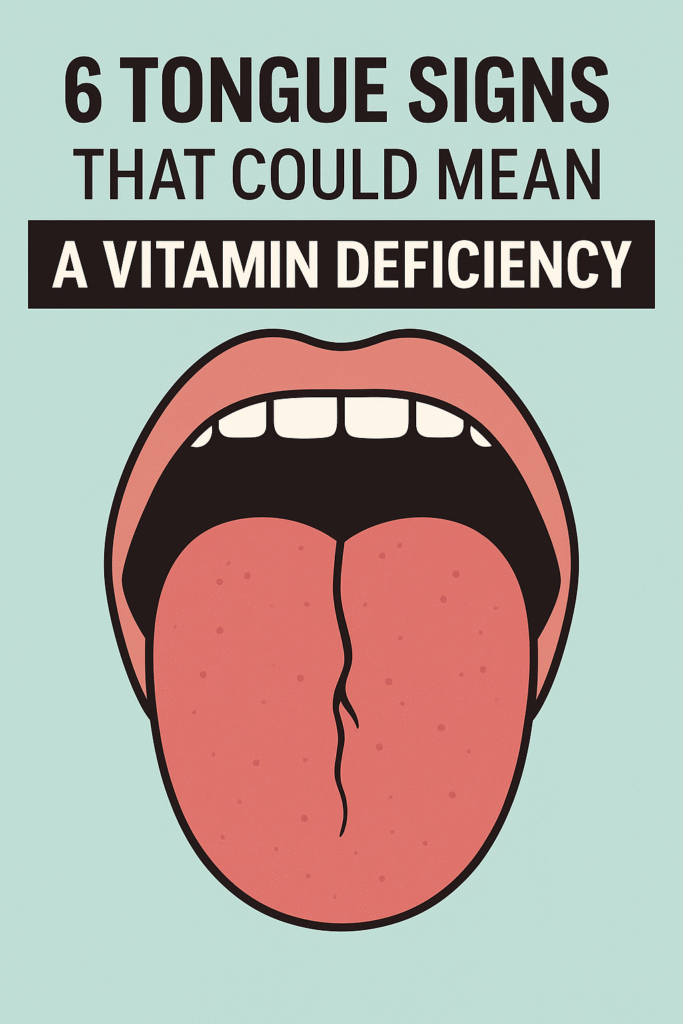
⚠️ Affiliate Disclaimer: This post may contain affiliate links, which means I may earn a small commission — at no extra cost to you — if you make a purchase through one of these links. I only recommend products or services I genuinely trust and believe can provide value. Thank you for supporting My Medical Muse!
Why Do My Fingers Lock When Bending? 7 Simple Remedies That Work Fast
Why Do My Fingers Lock or Get Stuck When Bending? Simple Remedies
Have you ever tried to bend or straighten your fingers only to feel them suddenly lock, snap, or get stuck halfway? This uncomfortable and sometimes painful condition is commonly referred to as trigger finger (the medical term is stenosing tenosynovitis).
While the sensation can be alarming, the good news is that finger locking is often manageable with the right knowledge, a few simple remedies, and medical treatments when necessary, most people regain smooth finger movement without lasting problems.
In this comprehensive guide, we’ll explore:
- What finger locking is and why it happens
- Common causes and risk factors
- Symptoms and how to identify trigger finger
- At-home remedies for relief
- Lifestyle changes to prevent flare-ups
- Medical treatment options if symptoms persist
- Frequently asked questions
By the end, you’ll have a clear understanding of why your fingers might lock when bending and how you can take steps toward lasting relief.
What Is Finger Locking (Trigger Finger)?
Finger locking happens when one or more fingers catch or “lock” in a bent position, then suddenly release with a snapping sensation. It may feel as though your finger is “stuck” and requires extra effort or even the help of your other hand to straighten out.
The condition is called trigger finger because the snapping motion resembles pulling and releasing a trigger.
Medically, it develops when inflammation narrows the tendon sheath in your finger. The sheath is like a tunnel that your finger tendons glide through as you bend and straighten your hand. When this tunnel becomes swollen, the tendon doesn’t move smoothly anymore, causing that catching or locking effect.
For some people, it starts as mild stiffness in the morning. For others, it progresses until the finger locks completely in a bent position, making simple tasks like writing, typing, or gripping objects very difficult.
Why Do Fingers Lock When Bending?
To fully understand what’s happening, it helps to take a closer look at the anatomy of the hand.
- Tendons: These are strong, rope-like tissues that connect the muscles in your forearm to the bones in your fingers. They act like cables, pulling your fingers into motion when your muscles contract.
- Tendon sheath: The tendons pass through a protective, tunnel-like covering called a sheath. Think of it as a sleeve that guides and protects the tendon as it moves.
- Pulleys: Along the sheath are tiny bands of tissue known as pulleys, which hold the tendon close to the bone and keep its movement efficient, almost like the eyelets that guide a shoelace.
When everything is healthy, the tendon slides smoothly through the sheath every time you bend or straighten your fingers.
But when the tendon becomes inflamed, swollen, or develops a small lump (nodule), it no longer glides easily. Instead, it catches on the pulley, like a rope snagging on a hook. This friction causes the finger to:
- Stick or lock when bent
- Snap suddenly when forced straight
- Sometimes remain stuck in a bent position until physically pulled open
This explains why you might notice a popping or snapping feeling, especially after holding objects, typing, or doing tasks that involve gripping.
Over time, repeated catching can worsen inflammation, creating a cycle where the finger locks more often and the pain increases.
Common Causes of Finger Locking
Finger locking or trigger finger doesn’t happen without reason. In most cases, it develops when irritation or inflammation makes it harder for the tendon to glide smoothly through its sheath. Several underlying factors may contribute to this problem:
1. Repetitive Hand Movements
One of the most common culprits is overuse of the fingers. Jobs or hobbies that involve repeated gripping, pinching, or forceful finger movements can place significant strain on the tendons.
- Occupational risks: Typists, cashiers, factory workers, farmers, and assembly line workers often repeat the same finger motions for hours each day.
- Lifestyle factors: Activities like gardening, playing musical instruments (piano, guitar, violin), sewing, or using handheld tools can also trigger irritation.
- Sports-related strain: Athletes who rely heavily on hand grip, such as climbers, weightlifters, or tennis players, may be more prone to tendon inflammation.
Over time, this constant wear and tear leads to tiny injuries, swelling, and eventually, the locking sensation.
2. Underlying Health Conditions
Certain medical conditions increase the likelihood of developing trigger finger:
- Diabetes: People with diabetes are significantly more likely to experience finger locking. High blood sugar levels can affect tendon health and lead to stiffness.
- Rheumatoid arthritis: This autoimmune condition causes chronic inflammation, which can affect the tendons as well as the joints.
- Gout: Uric acid crystal deposits can irritate tendons, leading to swelling and discomfort.
- Carpal tunnel syndrome: Though primarily affecting the wrist, it sometimes coexists with trigger finger, as both involve tendon or nerve irritation in the hand.
These conditions don’t guarantee finger locking, but they raise the risk considerably.
3. Injury or Trauma
Sometimes, finger locking develops after a direct injury to the palm or fingers. A cut, bruise, or repetitive strain can inflame the tendon sheath. Even small injuries that go unnoticed can gradually lead to irritation and reduced tendon mobility.
4. Age and Gender
Trigger finger tends to occur most often in adults between 40 and 60 years old, although it can appear at any age. Women are more likely than men to develop the condition possibly due to hormonal influences or higher rates of conditions like diabetes and arthritis in women.
5. Unknown Causes
In some cases, no clear cause is identified. Finger locking may simply occur due to age-related changes in tendon elasticity, natural wear, or genetics.
Symptoms of Trigger Finger
Recognizing the symptoms early is important, as timely intervention can prevent the condition from getting worse. Key signs include:
- Locking or catching: The finger hesitates or gets stuck when trying to bend or straighten.
- Morning stiffness: Symptoms often feel worse after waking up, when tendons are less flexible.
- Snapping sensation: You may feel or hear a “pop” as the finger suddenly releases.
- Tenderness or a bump: A small lump (nodule) may form at the base of the finger or thumb, where the tendon is irritated.
- Pain when gripping: Everyday activities, like holding a coffee mug, writing, or shaking hands may become painful.
- Severe cases: The finger may become locked in a bent position and cannot be straightened without using the other hand for assistance.
Fingers Commonly Affected
Although any finger can develop trigger finger, the ring finger and thumb are the most commonly affected. In some people, multiple fingers lock at once, especially those with diabetes or rheumatoid arthritis. The dominant hand is often at greater risk because it does most of the repetitive tasks.
Simple At-Home Remedies for Finger Locking
If your symptoms are mild or just beginning, there are several self-care strategies you can try to reduce inflammation, relieve stiffness, and restore smooth motion.
1. Rest and Avoid Repetitive Motions
The first and most important step is to rest the affected finger.
- Limit activities that involve heavy gripping, prolonged typing, or repeated finger bending.
- Take frequent breaks if your work requires constant hand use.
- When possible, switch to tools or equipment with ergonomic designs that reduce hand strain.
Rest allows the tendon to heal and helps prevent further irritation.
2. Apply Warm Compresses
Heat can be very effective in relaxing tight tendons and improving circulation.
- Warm water soak: Immerse your hand in warm (not hot) water for 10-15 minutes.
- Heating pad or towel: Apply to the base of the affected finger 2-3 times daily.
- Try combining warmth with gentle massage to boost blood flow and ease stiffness.
Warmth works best for stiffness, while cold packs may be more effective if swelling is present.
3. Gentle Stretching Exercises
Regular stretching keeps tendons flexible and reduces catching. Try these simple exercises:
- Finger extension: Place your hand flat on a table. Slowly lift one finger at a time while keeping the others pressed down. Hold for 5 seconds.
- Tendon gliding: Make a gentle fist, then straighten your fingers fully. Repeat this 10-15 times, 2-3 times per day.
- Thumb stretch: Gently pull your thumb backward with your other hand and hold for 10 seconds. Repeat 3-5 times.
- Rubber band exercise: Place a rubber band around your fingers and thumb, then open your hand slowly against the resistance. This strengthens supporting muscles and improves flexibility.
Consistency is key, gentle daily stretches are far more effective than occasional intense exercises.
4. Massage Therapy
Gentle massage is a simple but effective way to ease stiffness and discomfort caused by finger locking. By improving blood flow, massage can reduce tension in the tendon and surrounding tissues.
- Focus on the base of the affected finger and the palm area just below it.
- Use small, circular motions with light to moderate pressure.
For added relief, you can apply a little warm oil (like coconut or olive oil) or use a warm compress before massaging to soften tissues.
Avoid pressing too hard on the tender nodule at the base of the finger, as this may increase irritation.
5. Cold Compress for Swelling
If your finger feels warm, swollen, or inflamed, applying cold can help reduce irritation:
- Wrap an ice pack or a bag of frozen peas in a thin towel.
- Apply it to the base of the affected finger for 5-10 minutes at a time.
- Use cold therapy 2-3 times per day, especially after activities that make symptoms worse.
Alternate warm compresses for stiffness and cold compresses for swelling, this combination can be particularly effective in calming symptoms.
6. Over-the-Counter Pain Relievers
Nonsteroidal anti-inflammatory drugs (NSAIDs) can ease both pain and swelling. Common options include:
- Ibuprofen (Advil, Motrin)
- Naproxen (Aleve)
These medications can be taken orally or applied topically in the form of gels or creams. Always follow the dosage instructions and consult a healthcare professional if you have conditions like stomach ulcers, kidney problems, or are already on other medications.
7. Finger Splinting
Splinting gives your tendon a chance to rest by keeping the finger in a straightened position:
- Wear the splint at night, when involuntary bending can worsen inflammation.
- For people with more severe symptoms, daytime splinting during repetitive tasks may also help.
- Splints are available at most pharmacies, or your doctor may recommend a custom-made version for added comfort.
By limiting motion, splinting reduces strain on the tendon, allowing it to heal gradually.
Lifestyle Changes to Prevent Trigger Finger
Even after symptoms improve, finger locking can come back if the underlying causes aren’t addressed. Making a few lifestyle adjustments can help prevent recurrence:
- Modify gripping techniques: Choose ergonomic tools with cushioned or larger handles that reduce strain on your tendons.
- Take regular breaks: Every 20-30 minutes during repetitive tasks, give your hands a chance to rest and stretch.
- Daily hand stretches: Simple tendon-gliding and extension exercises can keep your fingers flexible.
- Eat for joint health: A diet rich in anti-inflammatory foods like fatty fish, nuts, olive oil, and leafy greens supports tendon and joint function.
- Manage chronic conditions: Keeping diabetes, rheumatoid arthritis, or gout under control greatly lowers your risk of recurrence.
When to Seek Medical Help
While many mild cases respond well to self-care, it’s important to know when professional help is needed. See a doctor if:
- Locking or stiffness persists despite rest and home remedies.
- Pain is severe enough to interfere with daily activities.
- Your finger gets stuck in a bent position and cannot be straightened without help.
- Multiple fingers are affected at once.
- There is redness, swelling, or warmth, which may indicate infection or severe inflammation.
Prompt medical evaluation can prevent the condition from worsening and restore full hand function.
Medical Treatment Options
If at-home remedies aren’t enough, several medical treatments are available. The right approach depends on the severity of your condition and your overall health.
1. Corticosteroid Injections
A corticosteroid injection into the tendon sheath is often the first line of treatment when conservative measures fail.
- The medication reduces inflammation and allows the tendon to glide smoothly again.
- Many patients experience relief after just one injection.
- However, in some cases, particularly in people with diabetes symptoms may return, requiring repeat injections or other treatments.
2. Percutaneous Release
This is a minimally invasive procedure performed under local anesthesia:
- A fine needle is inserted into the area around the affected tendon.
- The doctor carefully moves the needle to release the tight portion of the tendon sheath.
- Because it doesn’t require stitches, recovery is often quick, with minimal downtime.
This option is often recommended for patients with persistent locking but without advanced complications.
3. Open Surgery (Trigger Finger Release)
For severe or long-standing cases, surgery may be the most effective solution.
- During surgery, the doctor makes a small incision in the palm to cut the constricted tendon sheath, permanently allowing the tendon to glide freely.
- The procedure is usually done under local anesthesia and takes only a short time.
- Recovery is generally quick, with many people regaining normal finger function within a few weeks.
Physical therapy or gentle exercises may be recommended after surgery to restore strength and prevent stiffness.
Natural and Holistic Approaches
While medical treatments and at-home remedies are the most common ways to manage trigger finger, some people explore natural or holistic therapies to complement their care. These approaches may not work for everyone, but they can provide additional comfort and support overall hand health.
- Turmeric or ginger supplements: Both contain natural anti-inflammatory compounds (curcumin in turmeric and gingerol in ginger). Taken regularly, they may help reduce tendon irritation and joint stiffness. Turmeric can also be used in cooking or as a tea.
- Epsom salt soak: Dissolving Epsom salt in warm water and soaking your hands for 15-20 minutes can relax muscles, reduce tension, and ease stiffness in the tendons.
- Acupuncture or acupressure: These traditional practices aim to improve blood circulation, release tension, and reduce pain. While scientific evidence is mixed, many people report symptom relief with consistent sessions.
- Essential oils and topical balms: Some people use natural oils like peppermint, eucalyptus, or lavender diluted in a carrier oil for gentle massage. These may promote relaxation and reduce discomfort.
Always consult your doctor before starting supplements or alternative treatments, especially if you have chronic conditions like diabetes, high blood pressure, or are taking other medications. Natural remedies should complement, not replace, medical care.
Possible Complications if Untreated
While trigger finger may seem like a minor nuisance at first, ignoring persistent symptoms can lead to more serious consequences:
- Permanent stiffness: The finger may lose flexibility and remain stuck in a bent position.
- Painful contractures: Over time, scar tissue and chronic inflammation can make the finger lock permanently, causing lasting pain.
- Reduced hand function: Tasks like writing, cooking, holding tools, or even buttoning clothes can become difficult or impossible.
- Emotional frustration: Chronic pain and disability can affect mental health, self-confidence, and independence.
The good news is that early treatment can prevent these long-term issues. Even if your symptoms feel mild, it’s best to address them before they progress.
FAQs About Finger Locking
Is finger locking permanent?
Not always. Mild cases often improve with rest, stretching, and home care. However, if left untreated, severe cases may become permanent and require surgery.
Can trigger finger go away on its own?
Sometimes, yes especially if caused by temporary strain or overuse, but if symptoms last more than a few weeks or interfere with daily activities, medical help is recommended.
Which finger is most likely to lock?
The ring finger and thumb are the most commonly affected, though any finger can develop trigger finger.
Are there exercises to prevent finger locking?
Yes. Regular tendon-gliding, stretching, and grip-strengthening exercises can keep tendons flexible and reduce the risk of catching.
Does finger locking mean I have arthritis?
Not necessarily. While arthritis increases the risk, many people with trigger finger do not have arthritis. Other causes include overuse, injury, or diabetes.
Final Thoughts
Finger locking, though inconvenient and sometimes painful is usually treatable. For many people, simple remedies like rest, warm compresses, gentle stretching, and splinting are enough to restore smooth finger motion. For more persistent or severe cases, medical options such as corticosteroid injections or minor surgery provide long-term relief.
The key is early action, don’t wait until your finger becomes permanently stiff. Addressing symptoms early gives you the best chance to heal quickly, avoid complications, and get back to enjoying daily activities without pain or limitation with the right care, you can keep your hands strong, flexible, and ready for everything life throws your way.
👩⚕️ Need Personalized Health Advice?
Get expert guidance tailored to your unique health concerns through MuseCare Consult. Our licensed doctors are here to help you understand your symptoms, medications, and lab results—confidentially and affordably.
👉 Book a MuseCare Consult NowRelated Blog Post You Might Like:
- Why Do My Lips Peel Constantly? 10 Everyday Fixes That Truly Work
- Why Does My Jaw Hurt When I Wake Up? 10 Powerful Causes & Fixes
- 10 Everyday Causes & Fixes for Chest Tightness Without Pain
- 15 Proven Ways to Stop Chapped Lips That Keep Coming Back
- 7 Surprising Causes of Joints Cracking Loudly and How to Stop It
- Why Does My Throat Feels Scratchy but No Cold? 12 Powerful Causes & Fixes
- 10 Proven Ways to Reduce Swelling in Ankles at the End of the Day


